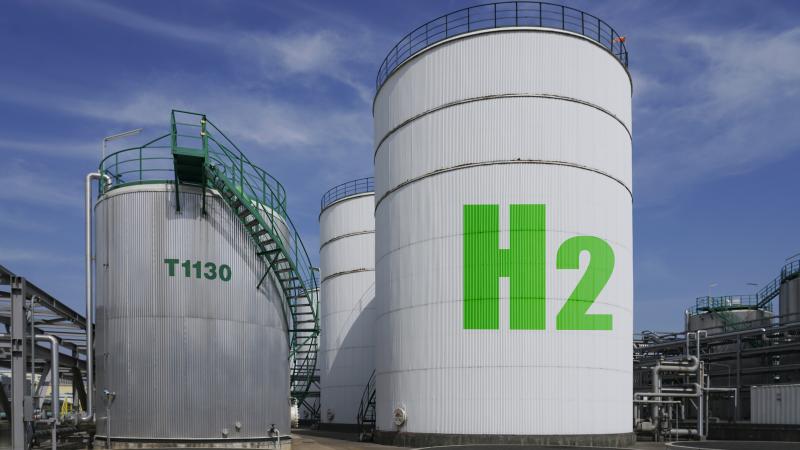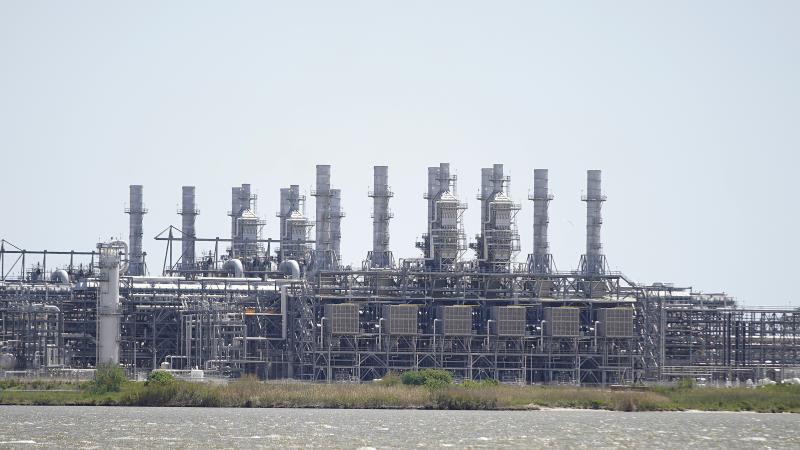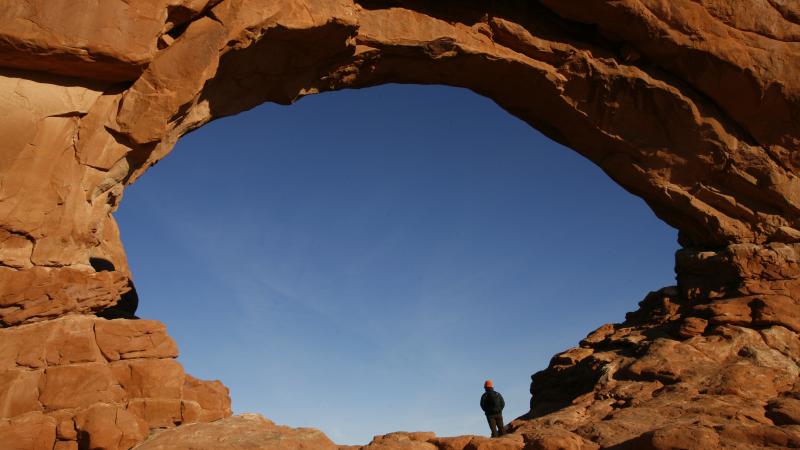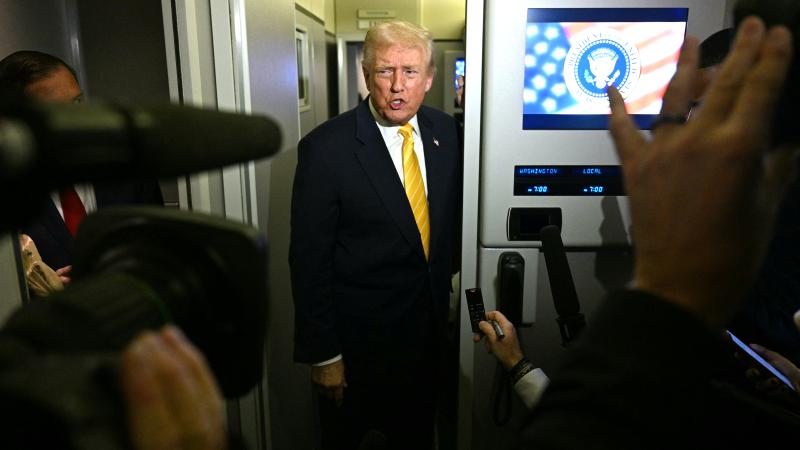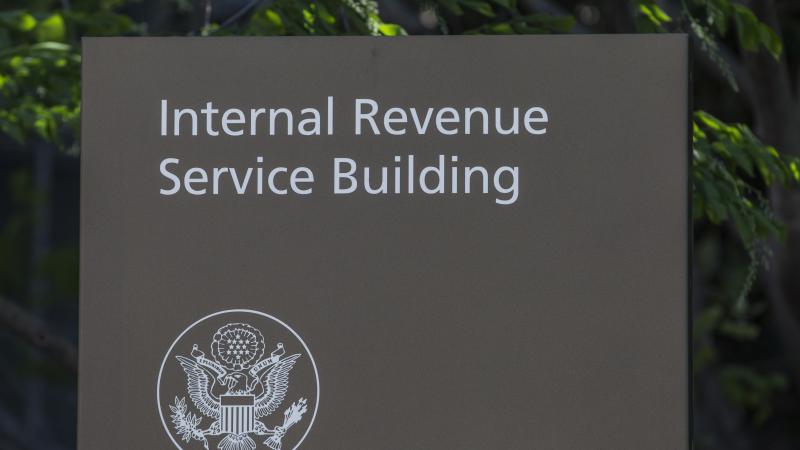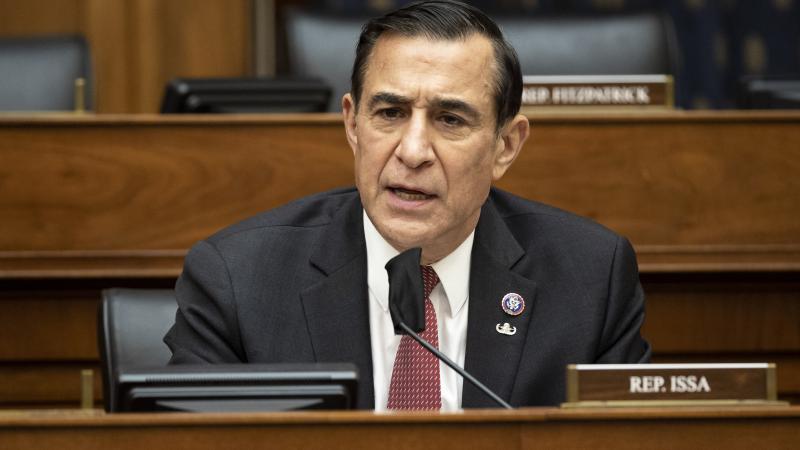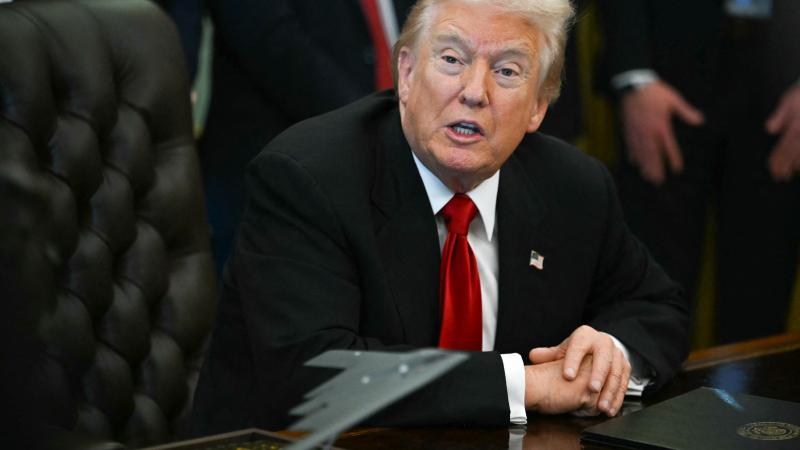Trump wants to unleash American mining, but opening new mines is a long-term goal, experts say
Even once you get past the permitting and legal blockades from environmentalists, bringing a mine to production can take 10 years or longer.
President Donald Trump signed an executive order last month that aims to increase long-term American mineral production. The order invokes the Defense Production Act, which grants the president a wide range of authorities to influence the domestic industrial base in the interest of national security. Given the recent volatility of major financial indexes, the economic benefits of expedited permitting can't come too soon.
The order provides a broad definition of critical minerals to include those on the U.S. Geological Survey list. The order also expedites federal permitting for mineral production projects, and it empowers agencies to use unallocated funds to facilitate domestic mineral production.
The order doesn’t provide any funding, and experts say mining in the United States happens on long timelines that make the prospect of new mines a long-term goal. “It could help things, maybe down the road. You might see some significant increase in domestic production versus importing, but it’s not going to be in the next 12 months,” David Hammond, a mineral economist with decades of experience as a mining consultant, told Just the News.
Over time, Congress has expanded the definition of what constitutes national defense under the Defense Production Act, which was initially passed in response to the Korean war. It now extends beyond actions that solely influence military preparedness and capabilities.
Decades-long wait for results
Former President Joe Biden, for example, used it to advance nine projects aimed at spurring heat pump manufacturing in service of his climate agenda. In 2020, Trump used it to order General Motors to produce ventilators during the COVID pandemic. Putting minerals into production, however, isn’t as easy as retooling an automobile factory to produce medical machines.
Hammond explains that there are several mining projects in the U.S. that can be placed into production. As an example, he points to the Resolution Mine in Arizona, a copper project. Rio Tinto, the global conglomerate behind the mine, has been in the process of trying to launch it for nearly 30 years. The company is hoping Trump will bring the long-stalled permitting process to the finish line, Mining.com reports.
Should Trump successfully get the mine fully permitted, and legal challenges don’t further delays, the mine still wouldn’t be in production until about 2035, according to the company. While the project could provide the U.S. with 25% of its copper needs for the next 40 years, Hammond explains there are technical challenges to opening the mine: It’s 7,000 feet underground, and the engineers will still need to figure out what to do with the tailings, a waste stream of byproducts that have to be stored according to environmental regulations.
Waste management of mining byproducts
Jack Lifton, executive chairman of the Critical Minerals Institute, told Just the News that the problem of how to store tailings safely is something we’ve resolved in the United States. As an example, he said Uranium can be mined with what’s called in-situ recovery (ISR) mining. Instead of an open pit, ISR involves pumping chemicals underground to release minerals and then pumping them out. The chemical solution is then treated and pumped back into the ground.
“This is a common way of processing uranium, because uranium presents itself in such ways that you can do that. Nobody really wants a big, open or underground uranium mine, because as you mine uranium, you have to seal off the mine from the exhausted sections. It's very expensive to mine uranium,” Lifton said.
There are also challenges to processing the ore, Hammond said. There are currently only two copper smelters in the U.S., and they already operate at capacity. This means that the mined material from Resolution Mine would likely have to be shipped to Japan for processing. Rio Tinto runs a smelter outside Salt Lake City, Utah, near its Kennecott mine, which the company is looking to expand, but Hammond said the expansion won’t add enough capacity to be able to process all the ore coming out of Resolution.
“You could start building smelters, but that could take probably five to seven years just to do the physical construction,” Hammond said, which doesn’t include the time it takes for permitting and dealing with legal challenges from environmentalists.
Investment risks may hamper new projects
There are other projects that have the potential to become mines, in that we know the minerals we need are there. But just because there are minerals in the ground, Hammond explained, doesn’t necessarily mean it can be recovered profitably. Moving from the stage of discovery to determining if it’s economically viable to mine is a process that doesn’t happen overnight.
“We’re probably talking a five-year period,” Hammond said. He also said the investment risk can be astronomical. Even when you have discovered a deposit and determined it has economic potential, then you have to start the permitting process. So, a company with a potentially profitable mine can still be decades away from production.
An S&P Global study last year examined 268 mines around the world to determine the average development times from discovery to production. It determined that, on average, new mines in the U.S. take 29 years. Of the U.S. projects the researchers examined, only three had come into production in the U.S. since 2002, while another 10 had been in development for decades. One had been in development since 1978.
U.S.' competitive disadvantage
These long lead times are what gives the U.S. a competitive disadvantage over China, and it’s helped China control so much of the world’s market in critical minerals. In the U.S. waste disposal and reclamation plans have to be baked into the engineering of the mine, for example. Chinese companies operating in China or other countries don’t often have to deal with those concerns.
“They are inclined to use brute force in the way they design anything. The Chinese would simply say, ‘We're not going to do any reclamation, so we're just going to throw the waste out on the ground. We don't care about that.’ And this is the way they do things in Africa,” Hammond said.
While this allows the nation to bring mines into production quickly, it can have long-term consequences. In Zambia, a tailings dam broke, Politico reported, on Feb. 18, releasing approximately 13 million gallons of acidic waste from a copper mine into a major river.
Global Voices, a human rights activist publication, reported last year on a Chinese mining company that relocated an entire village in Peru in order to protect the residents from pollution from a copper mine. The residents were relocated to a flood-prone wetland far from the central highway. And rather than bring economic opportunities to the area as promised, the company, according to Global Voices, relied on subcontracting and outsourcing labor, leading to lower wages in the area.
Mining companies in the U.S. face burdensome permitting impediments and excessive environmentalist lawfare, both of which delay projects. Even with those obstacles removed, it can take decades to open a mine. As an example, Hammond points to the Pebble Project in Alaska. The mine has massive deposits, but even if Trump could slam the permitting through and somehow eliminate all legal challenges, it would still be 20 years to bring it to production, Hammond said. The infrastructure, such as roads, would have to be built, along with the waste management and reclamation plans.
Trump’s executive orders and other actions he’s taking to create a mining-friendly regulatory environment in Washington, D.C., would naturally have a positive impact on mining. Given the long-term planning involved, there’s no way to predict what future administrations might do. Assuming they don’t undo the work set in motion now, in 10 or 20 years, the U.S. could see a flow of mineral supply chains into its domestic industries, along with the jobs and economic activity that come with it.
The Facts Inside Our Reporter's Notebook
Links
- Trump signed an executive order
- Defense Production Act
- U.S. Geological Survey list
- David Hammond
- initially passed in response to the Korean war
- used it to advance nine projects
- order General Motors to produce ventilators
- Resolution Mine in Arizona
- Rio Tinto
- nearly 30 years
- Mining.com reports
- production until about 2035
- waste stream of byproducts that have to be stored
- Critical Minerals Institute
- in-situ recovery
- two copper smelters
- smelter outside Salt Lake City
- S&P Global study last year
- China control
- Politico reported
- reported last year
- Pebble Project in Alaska
